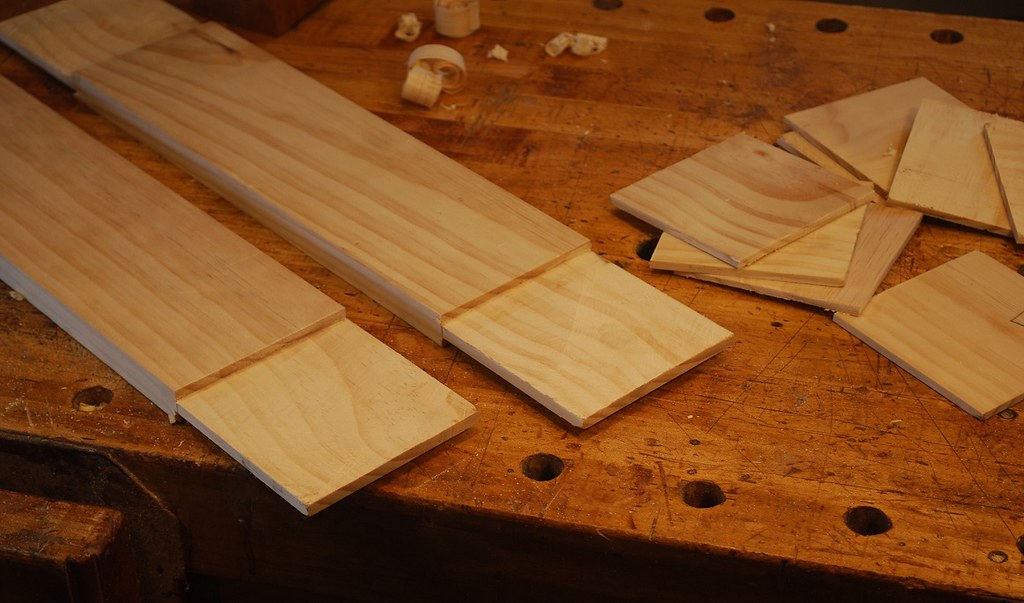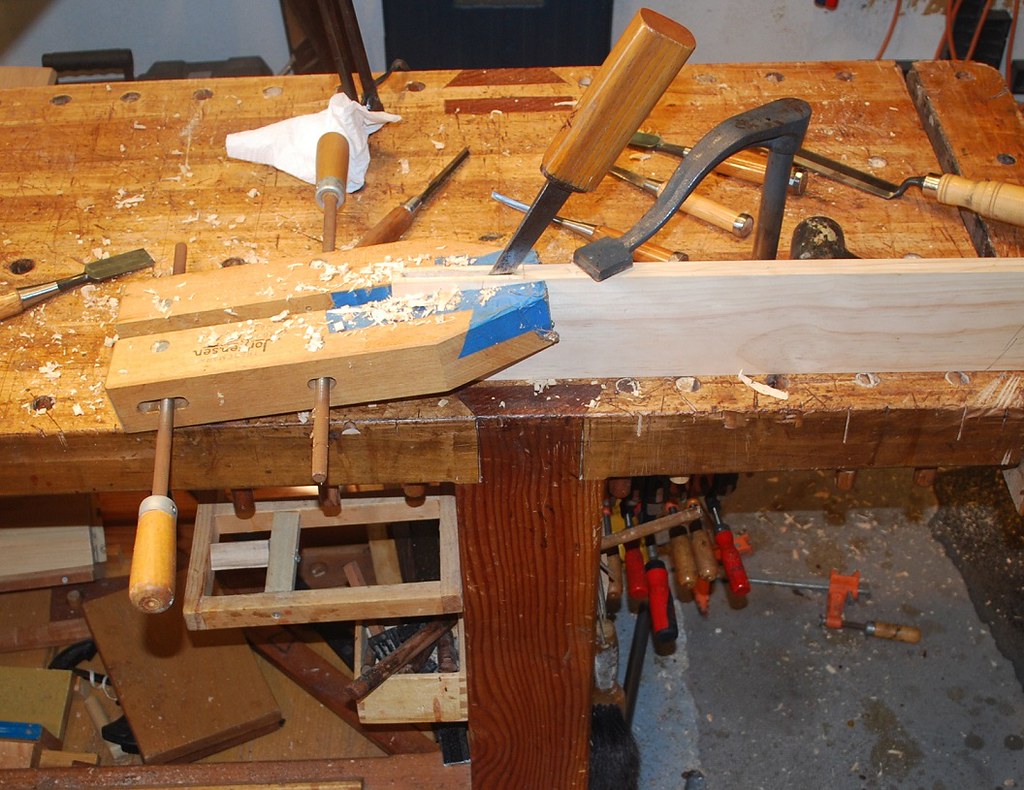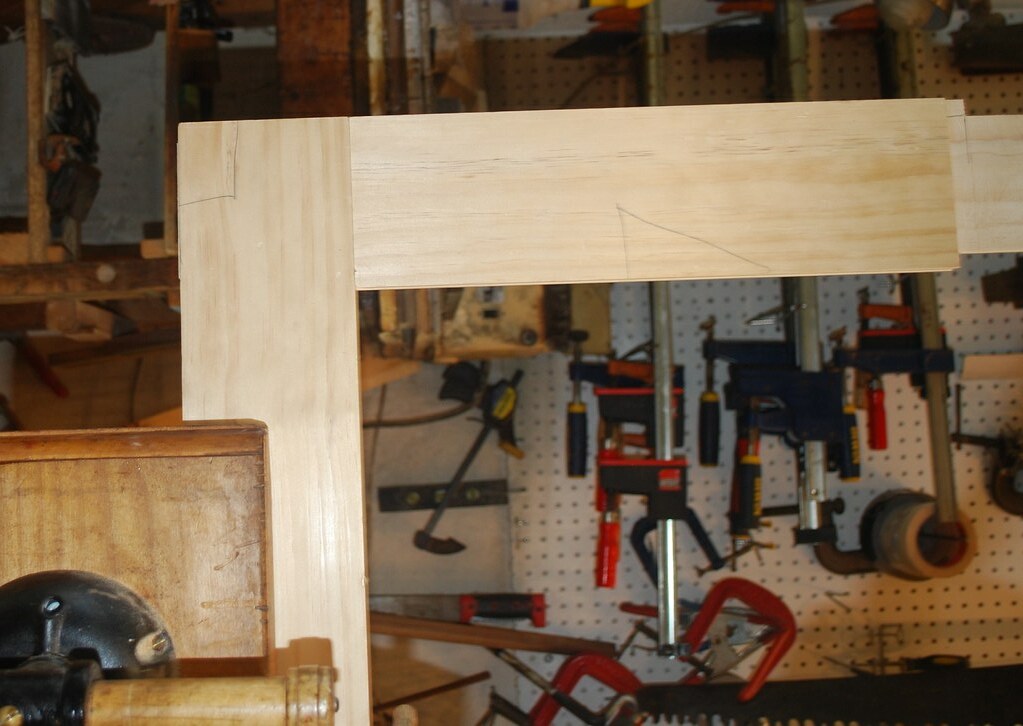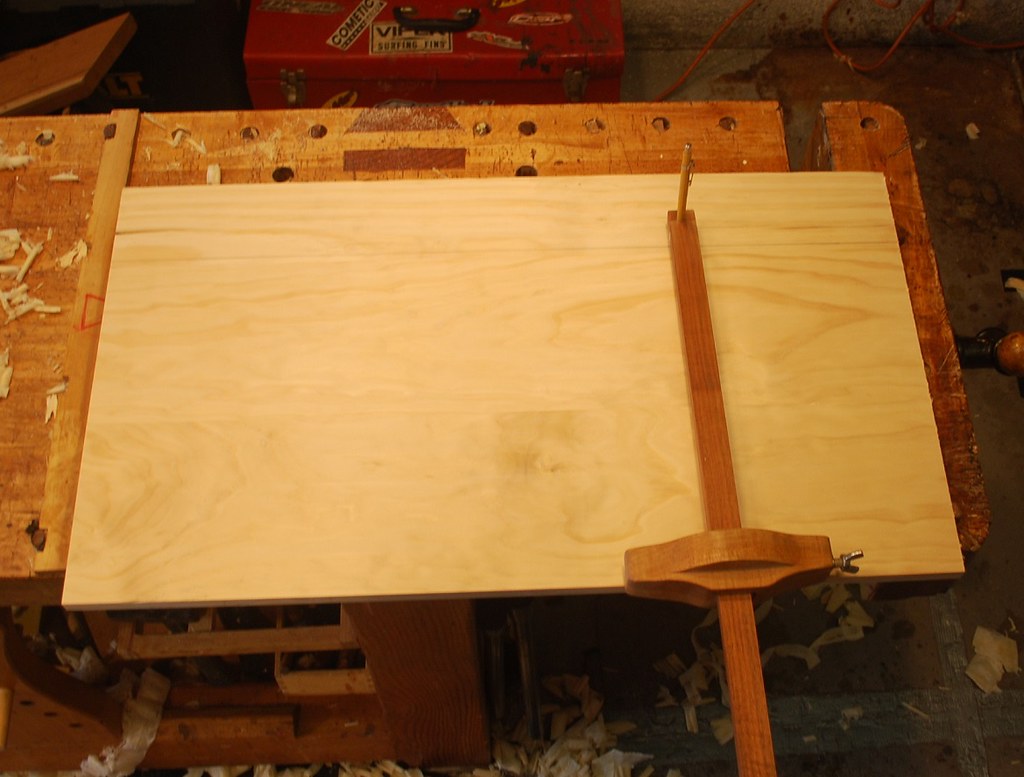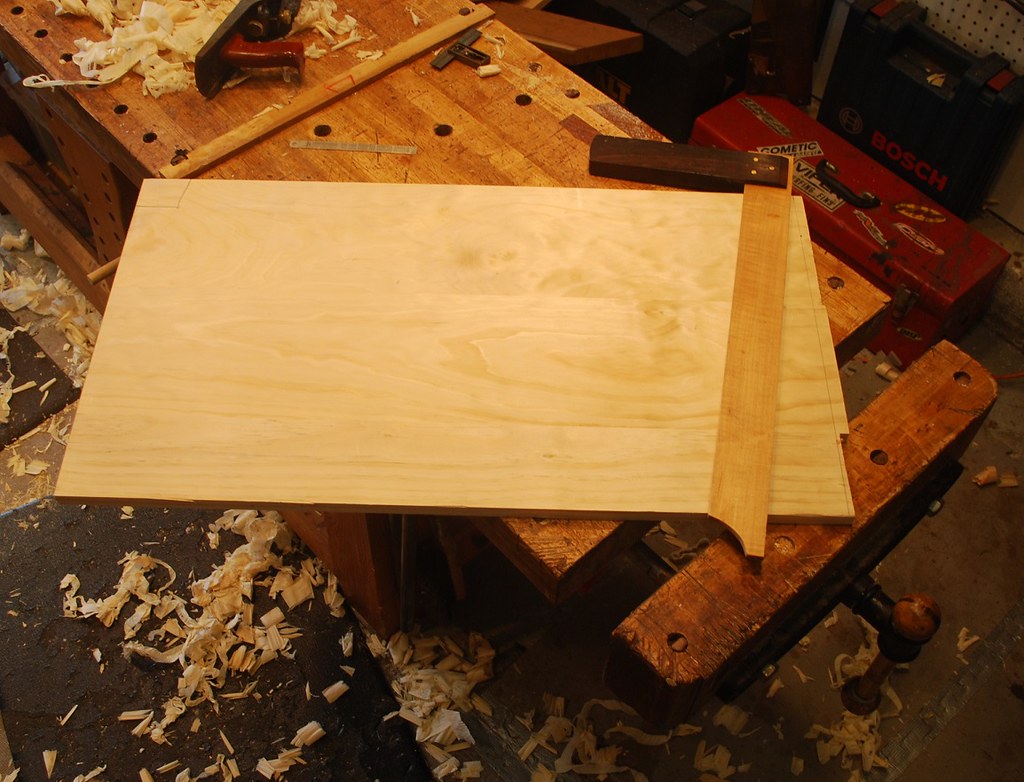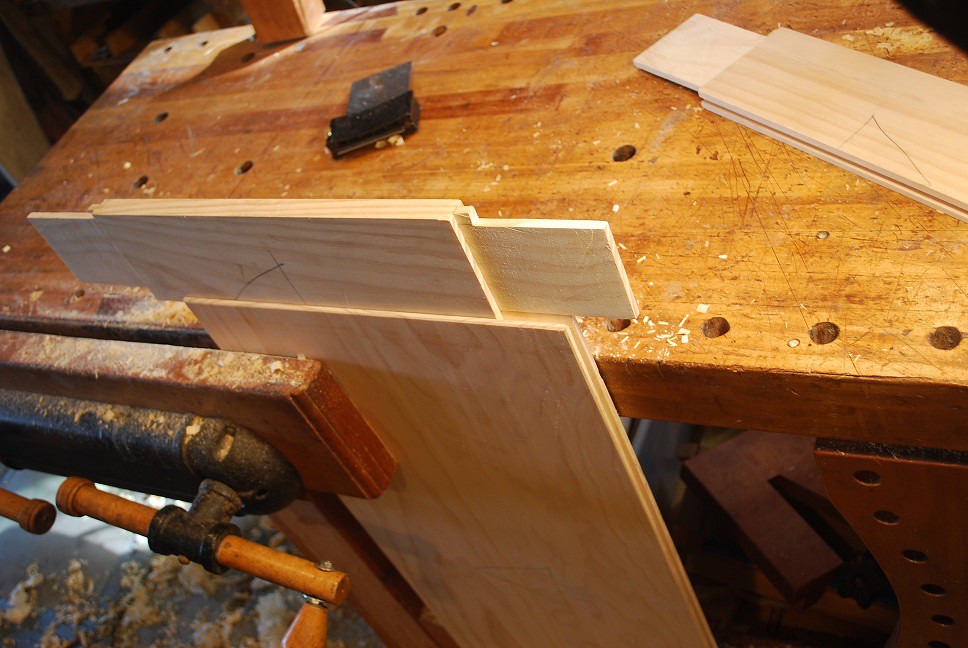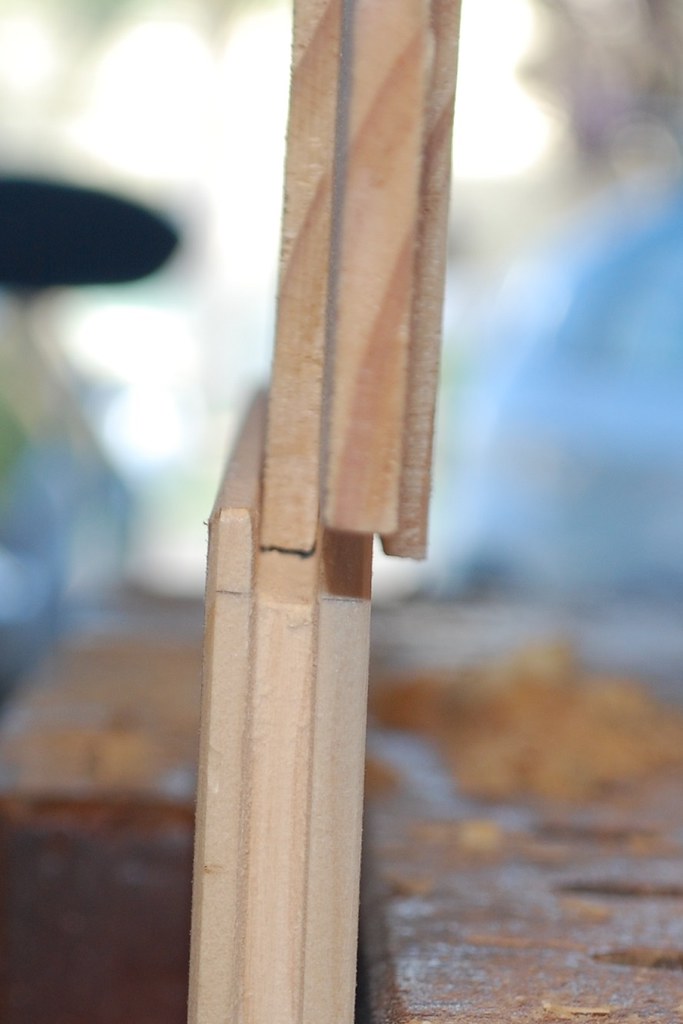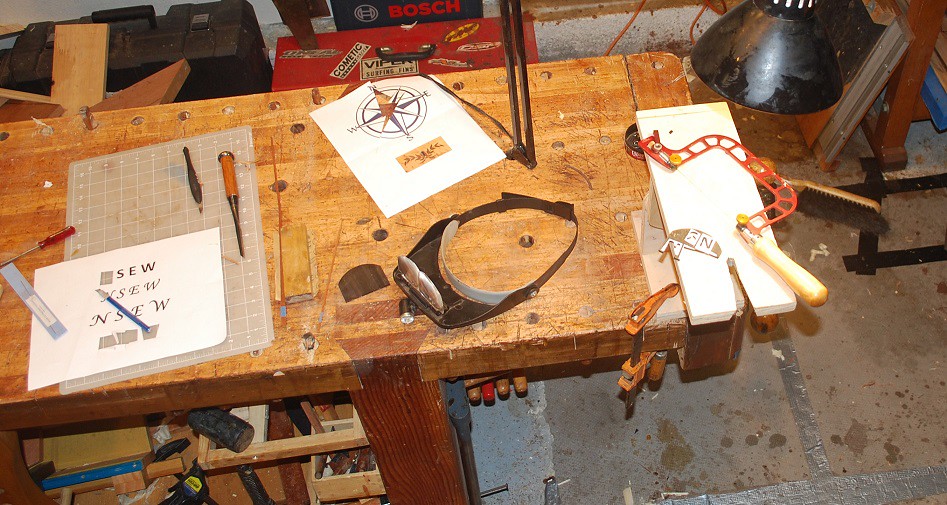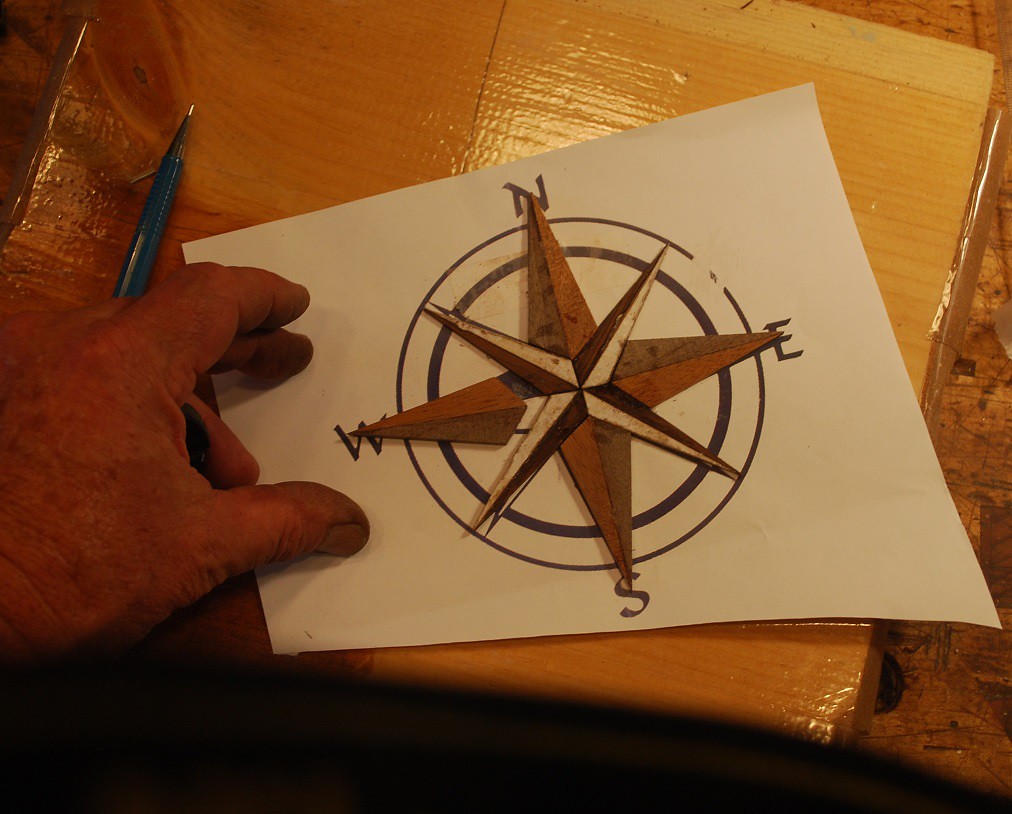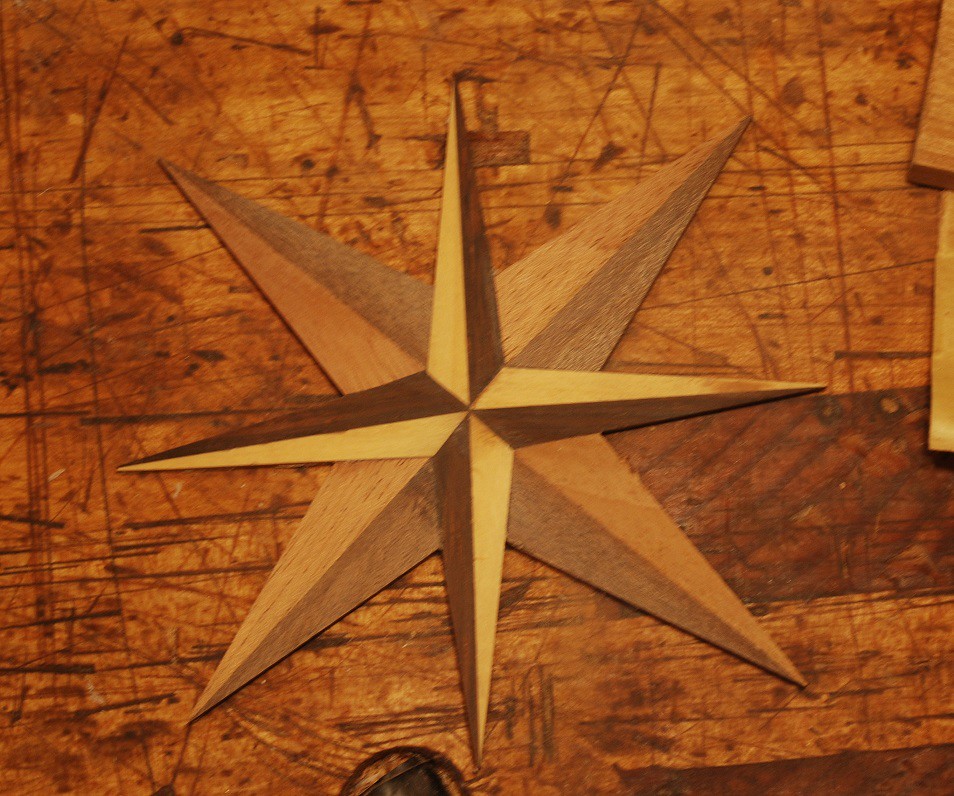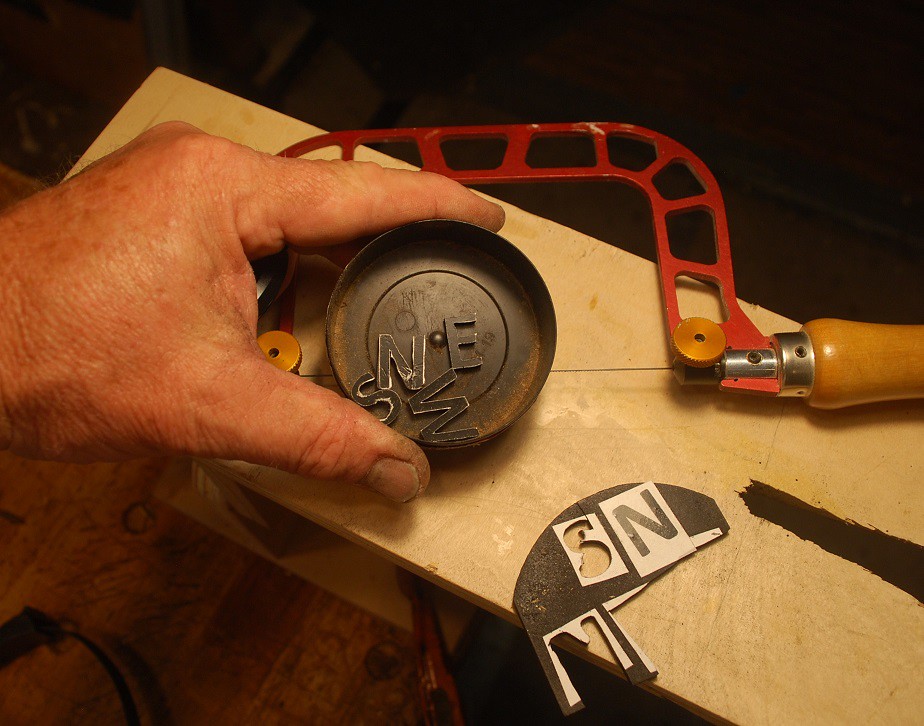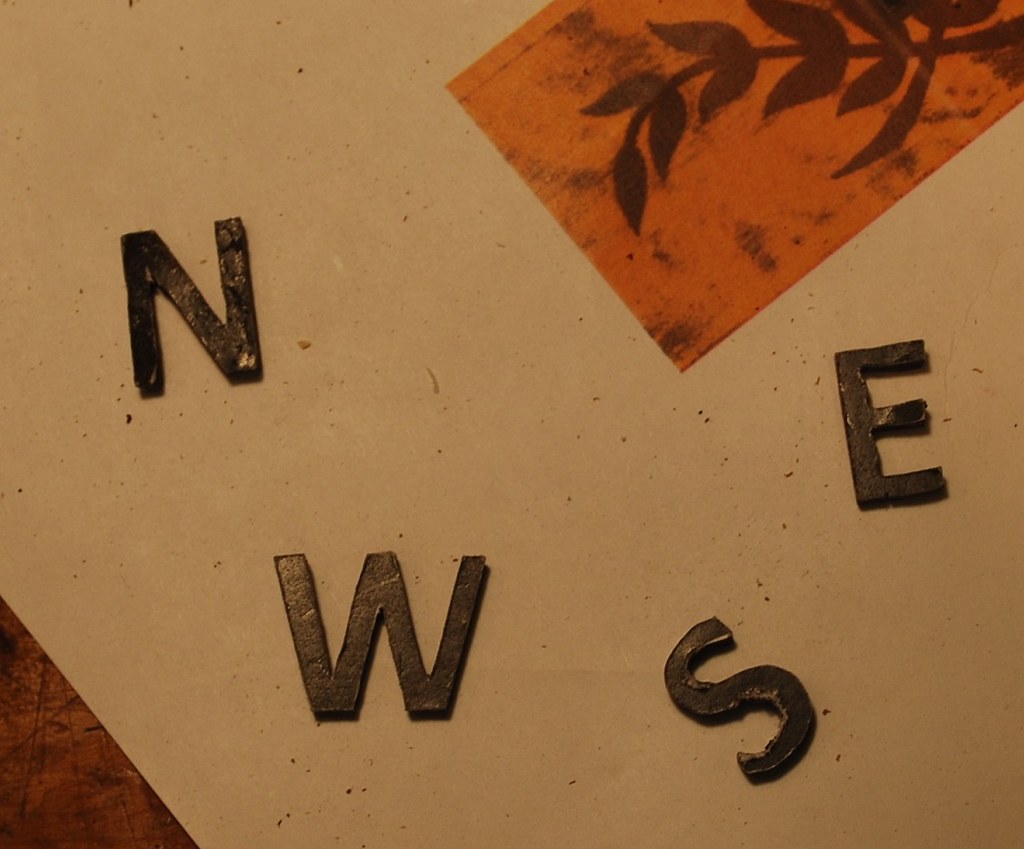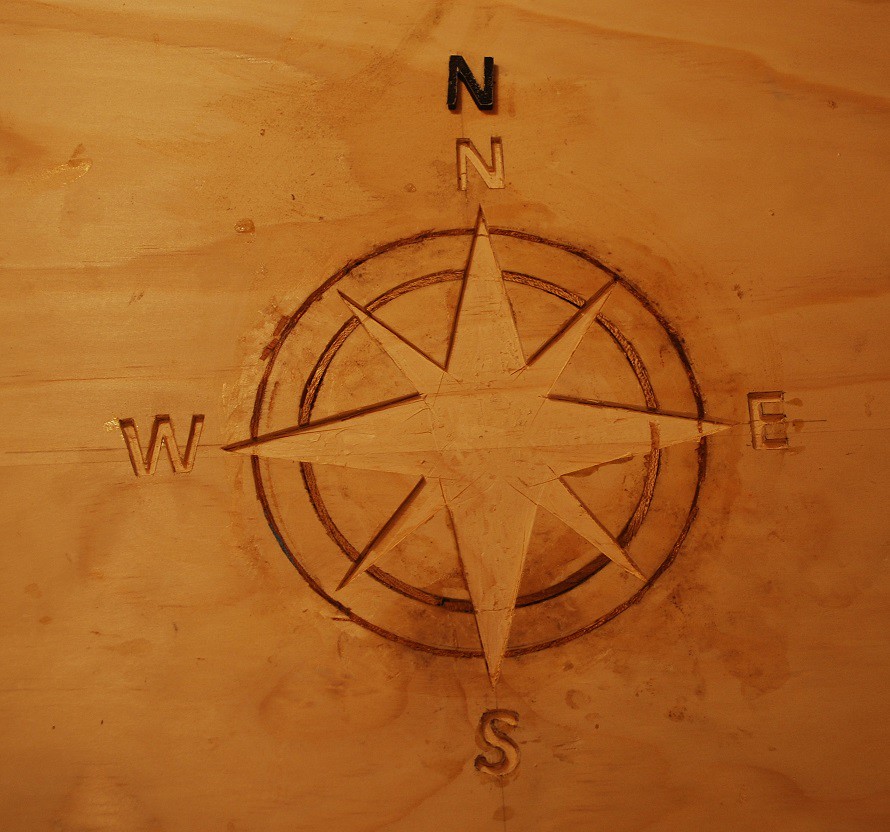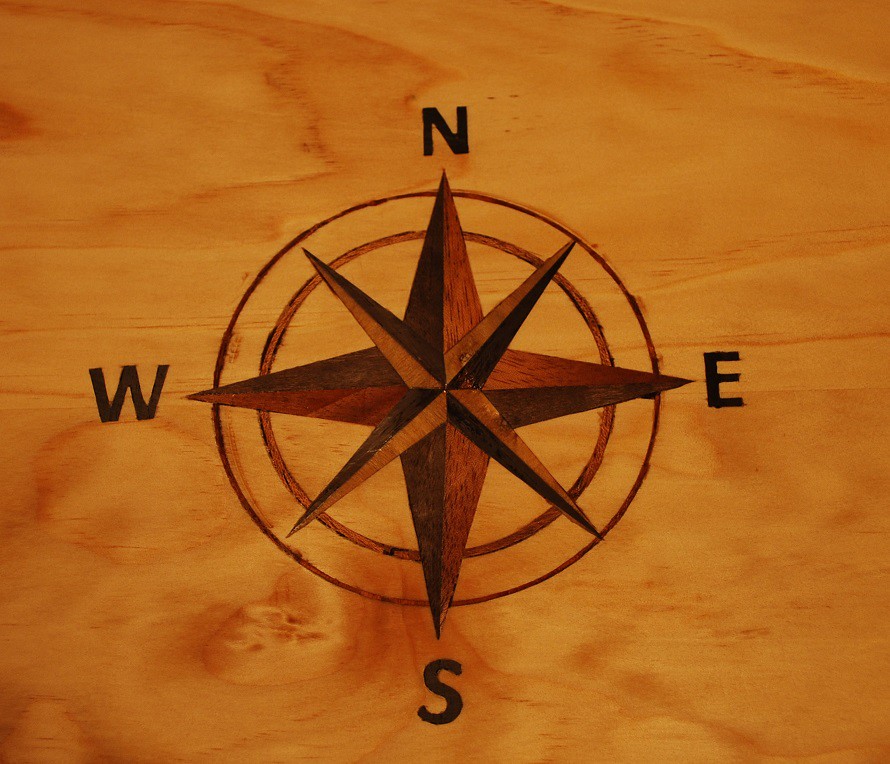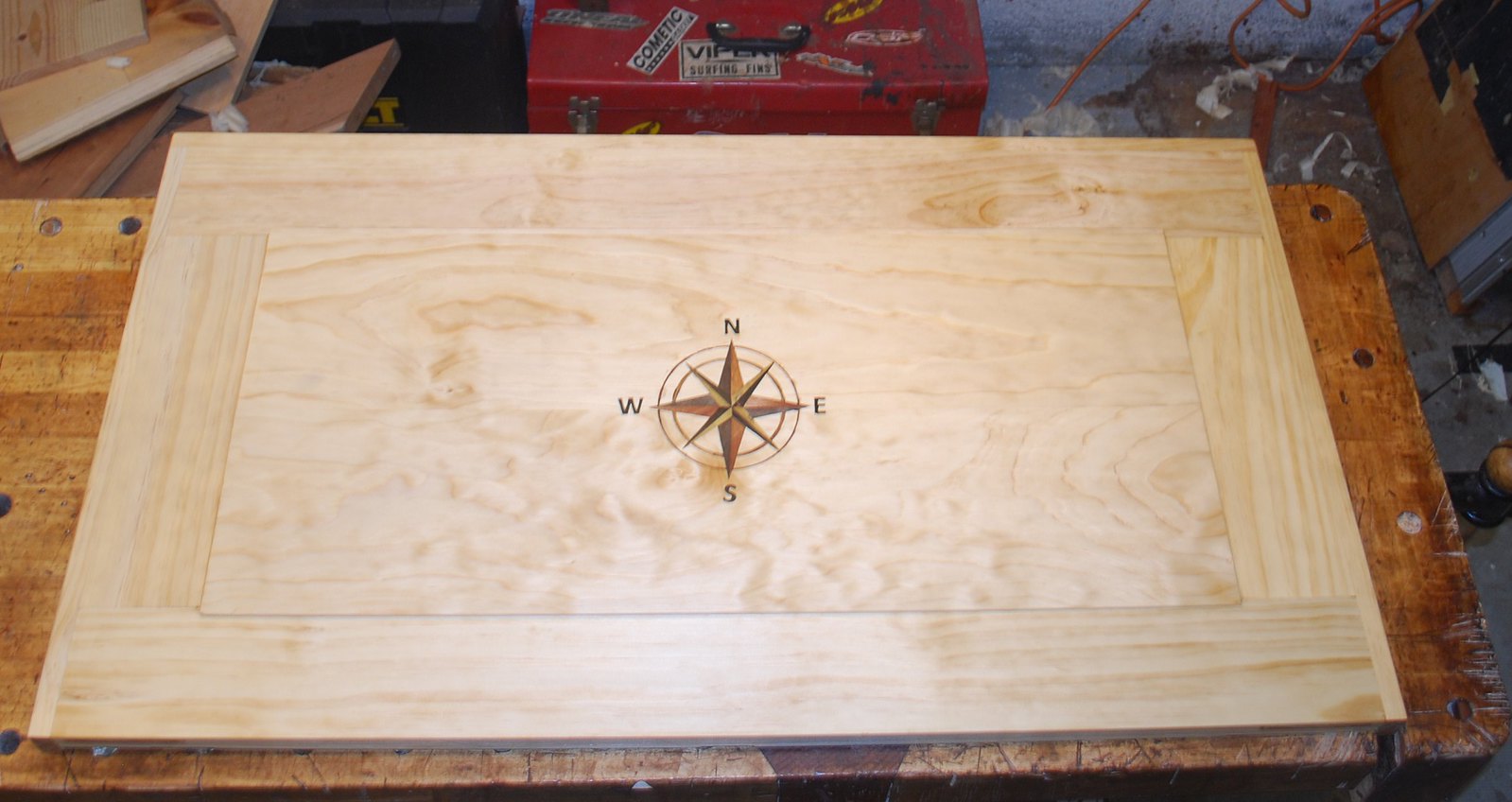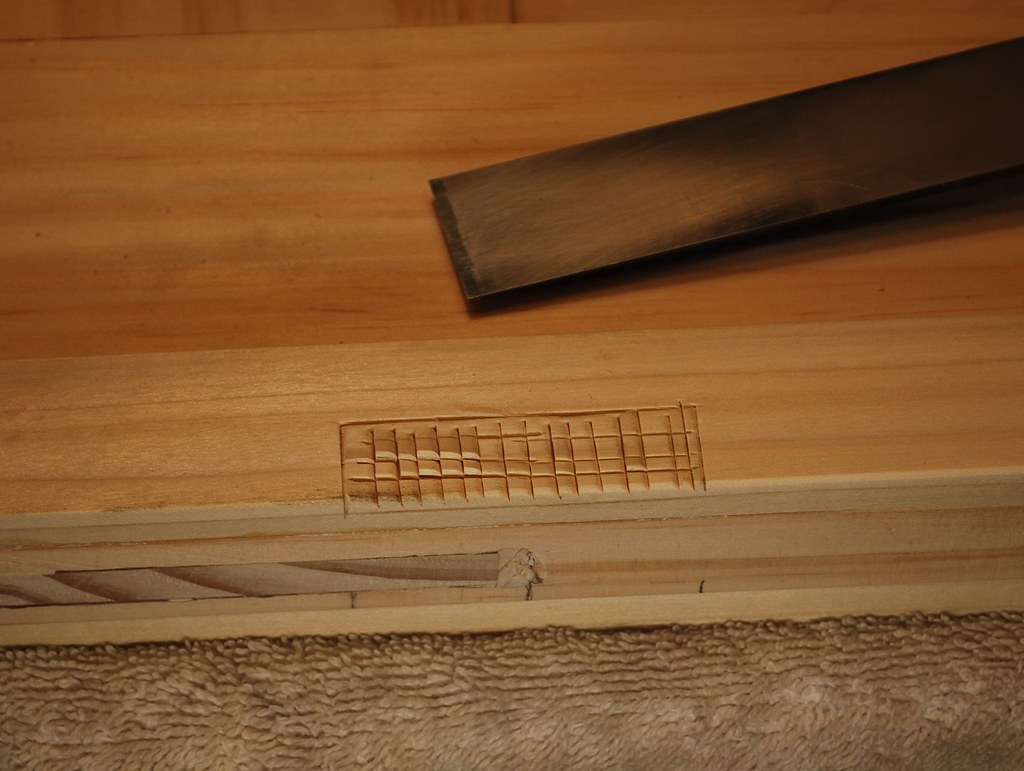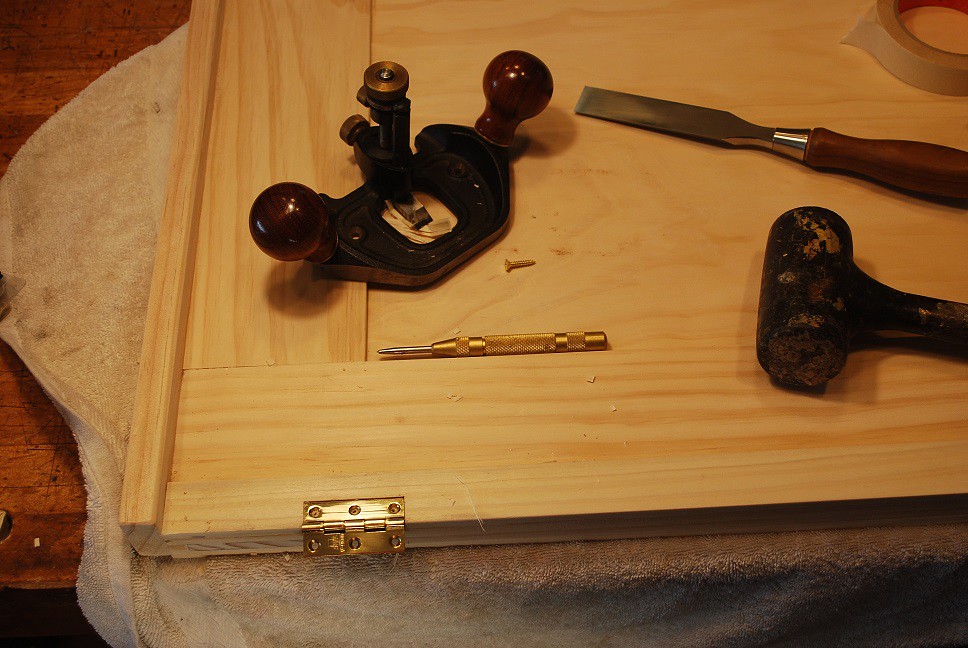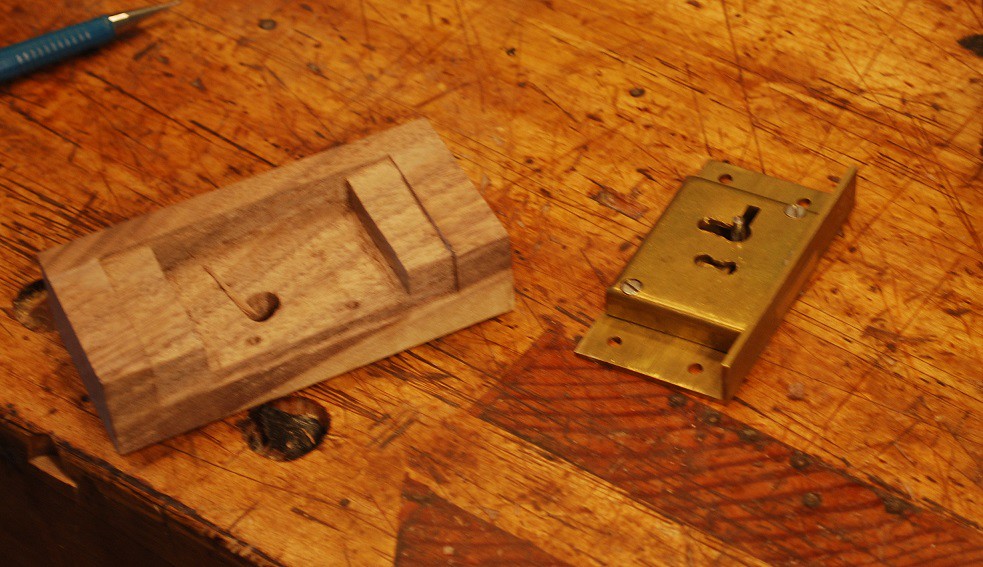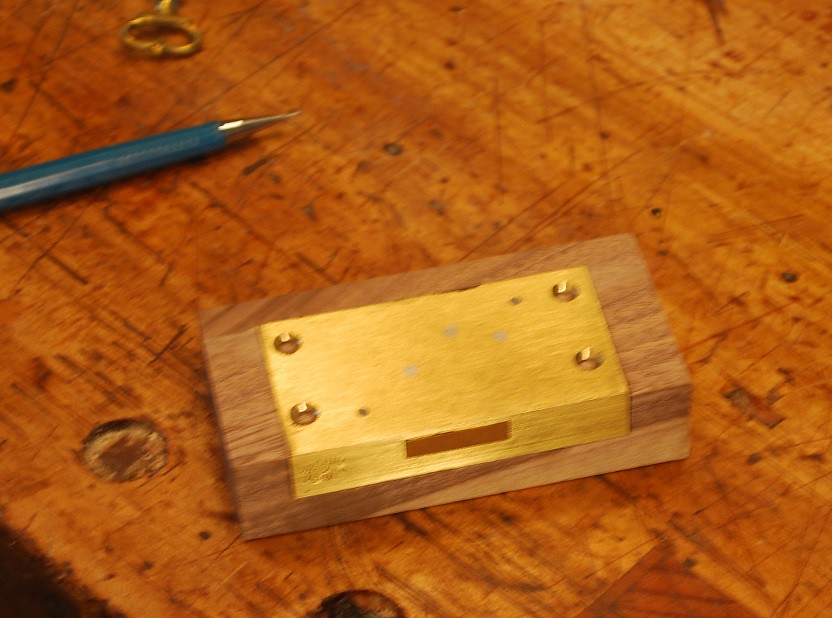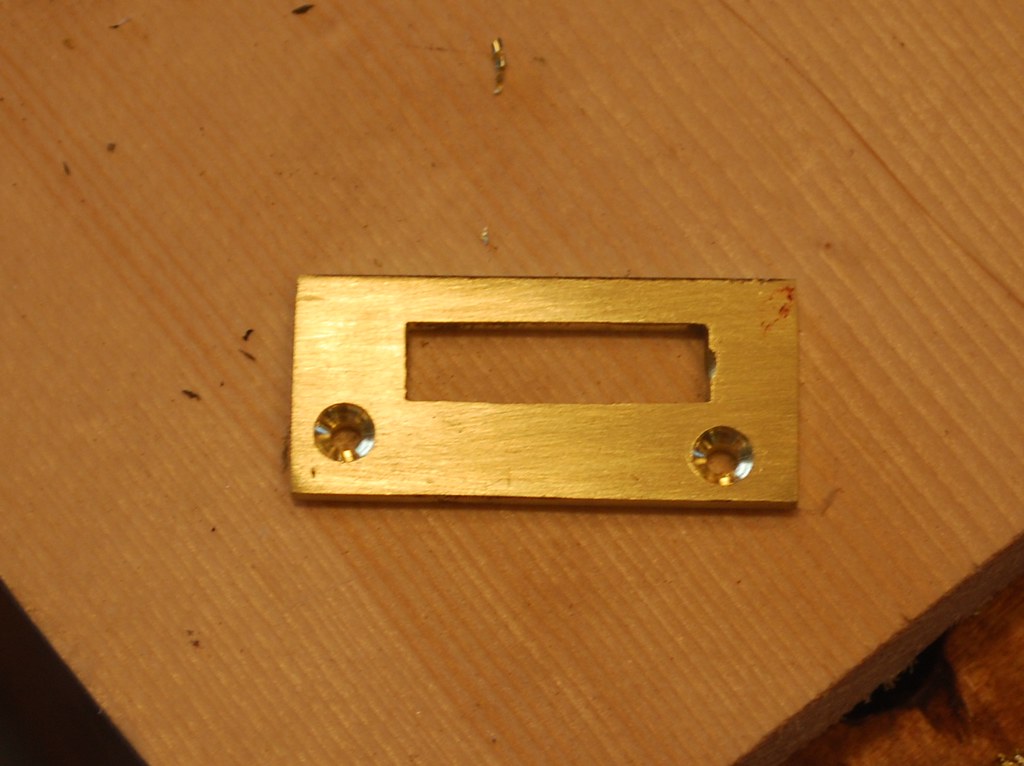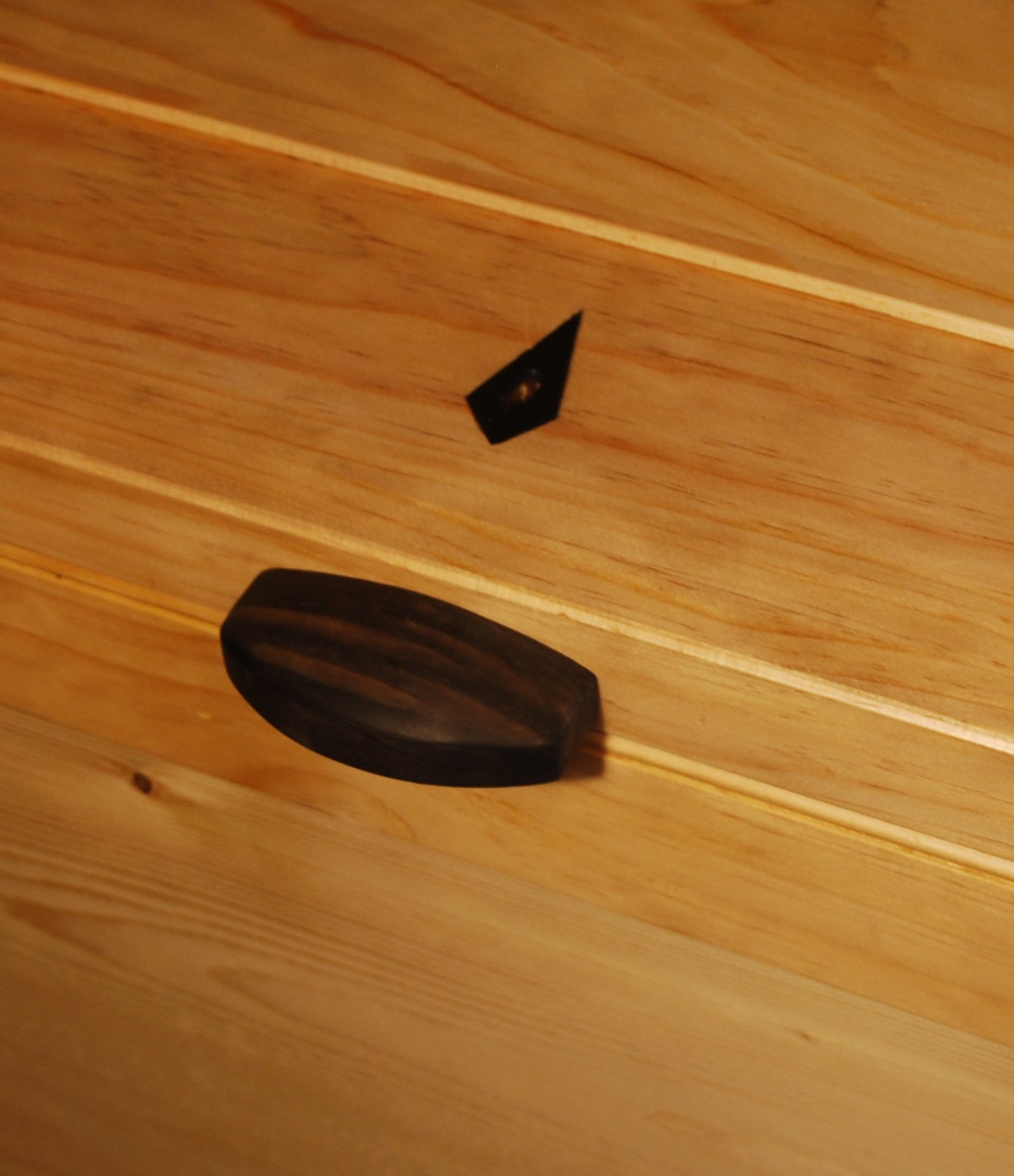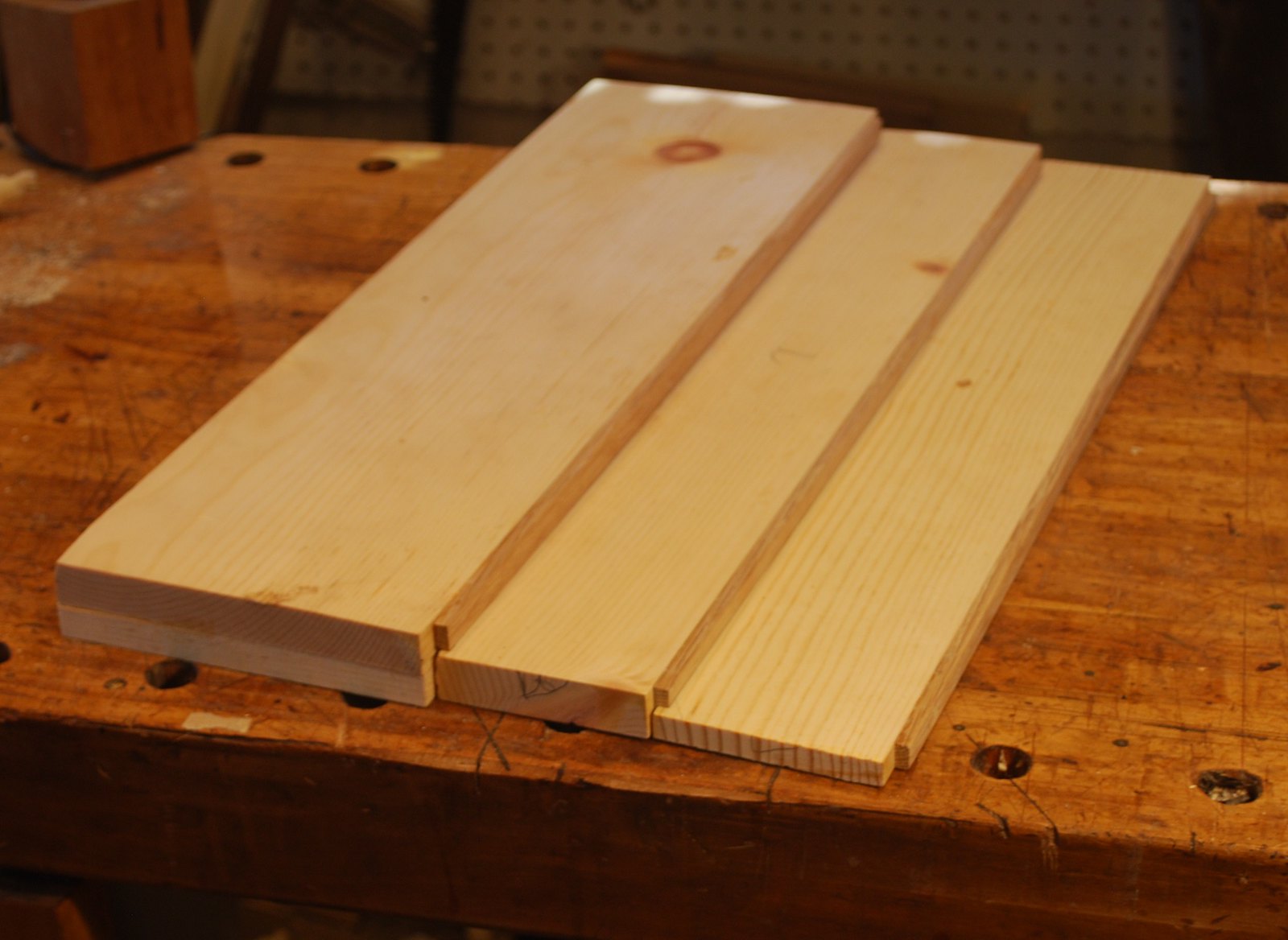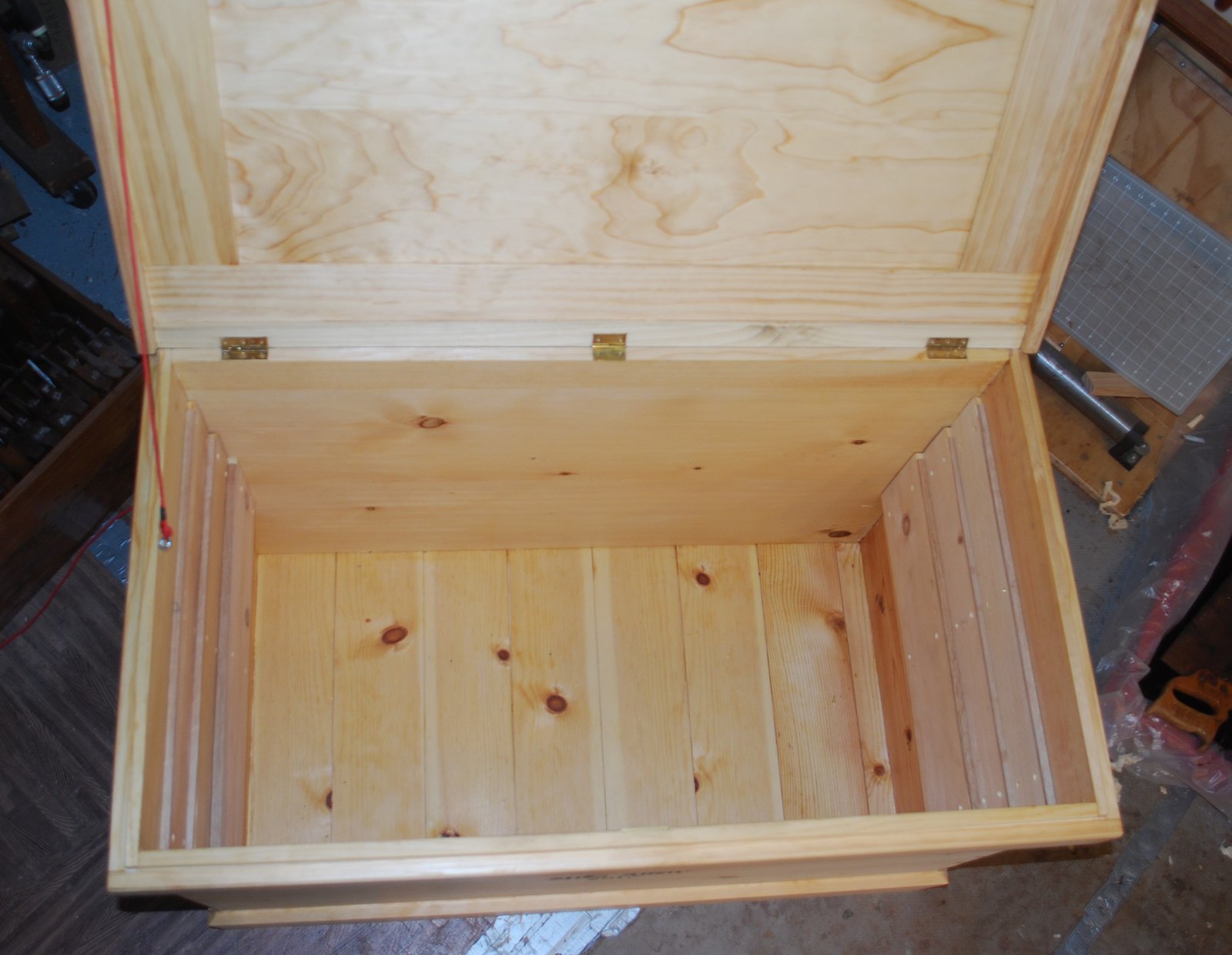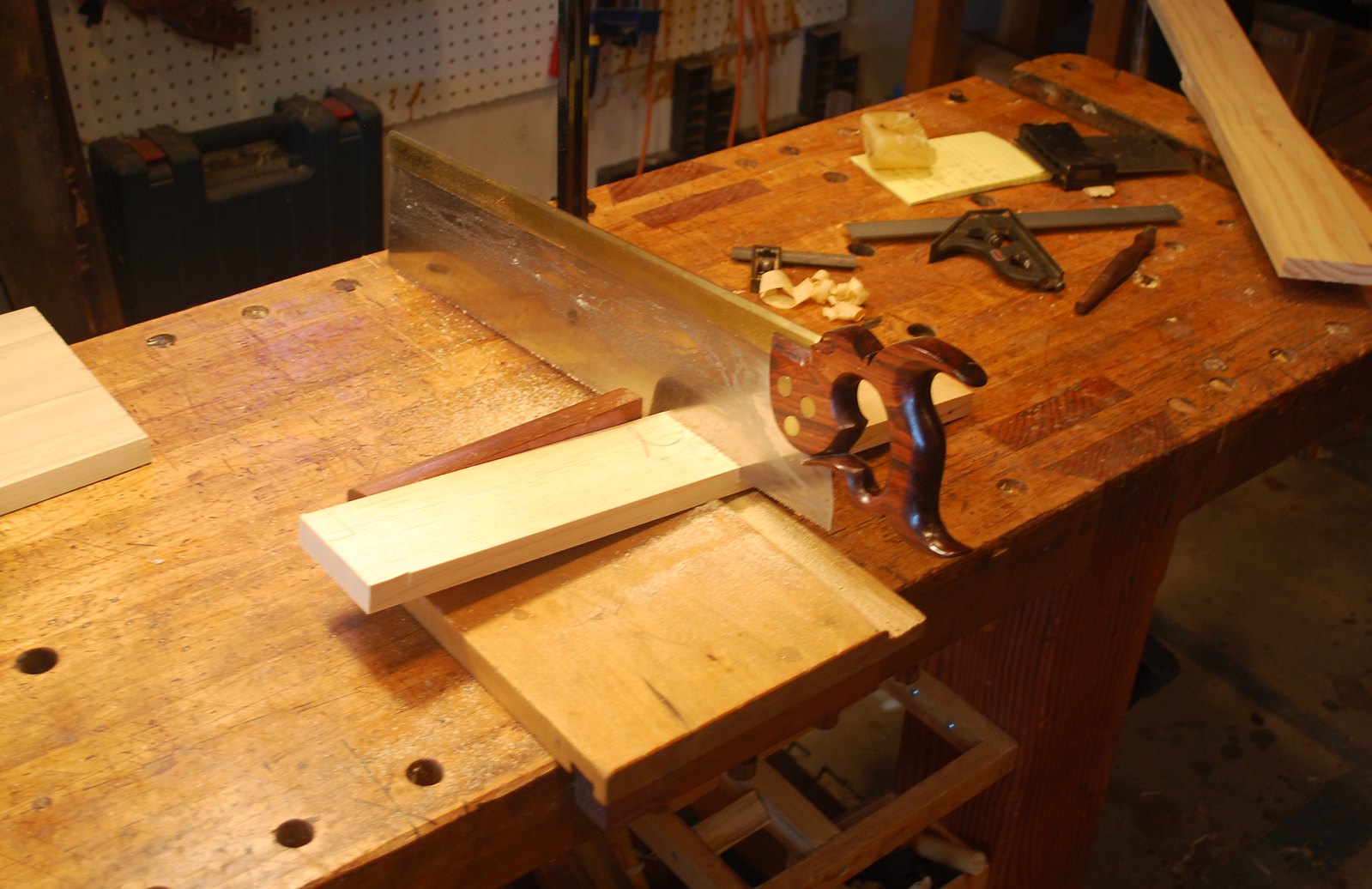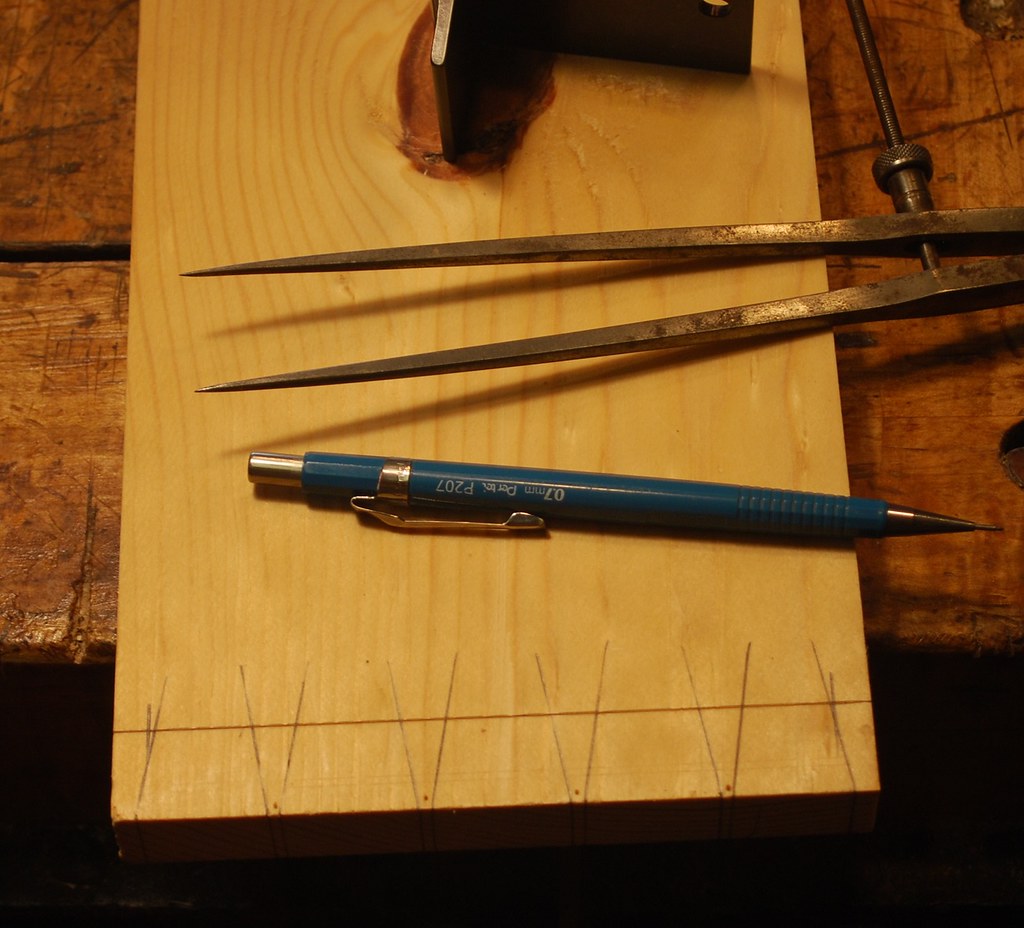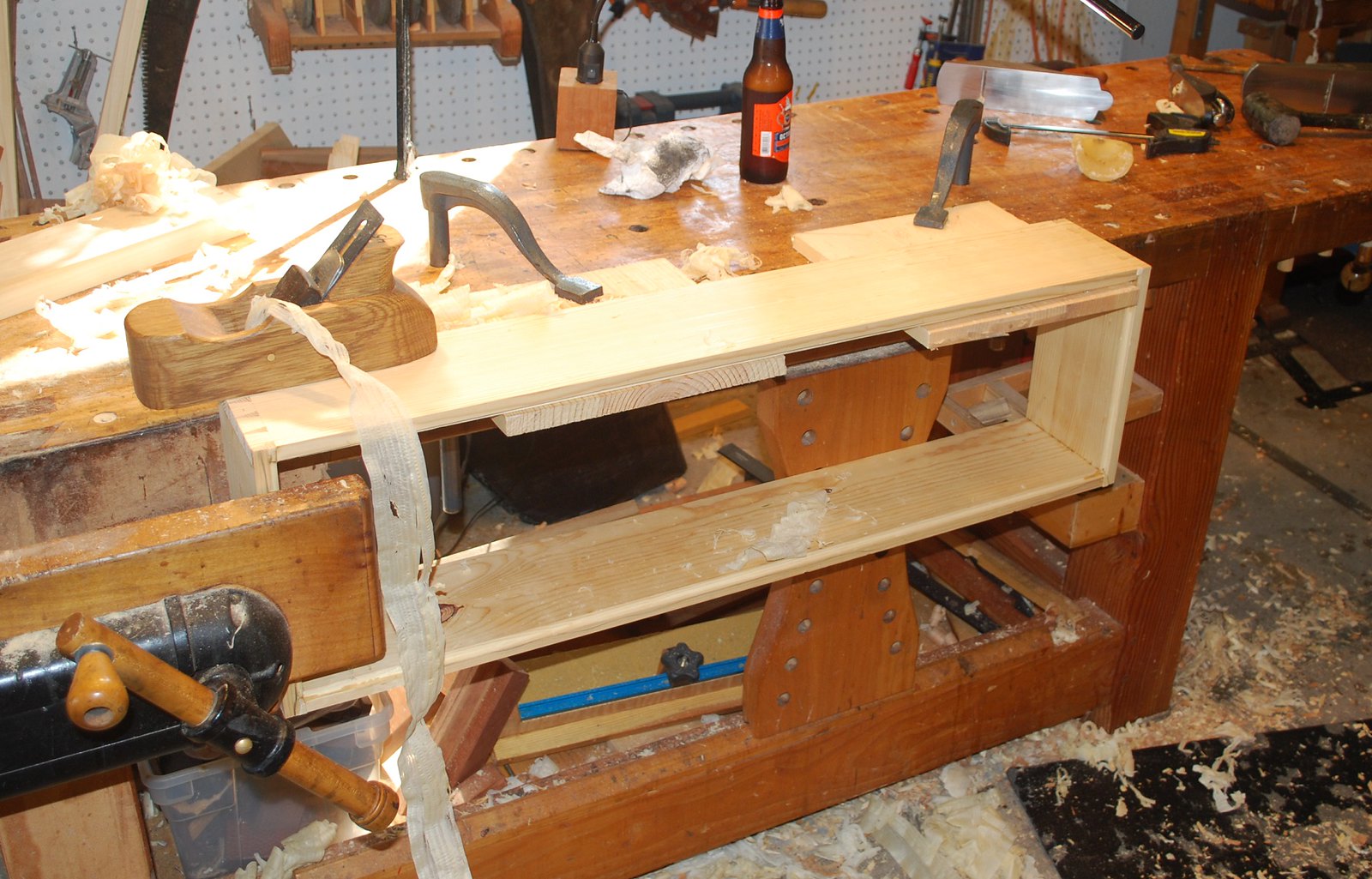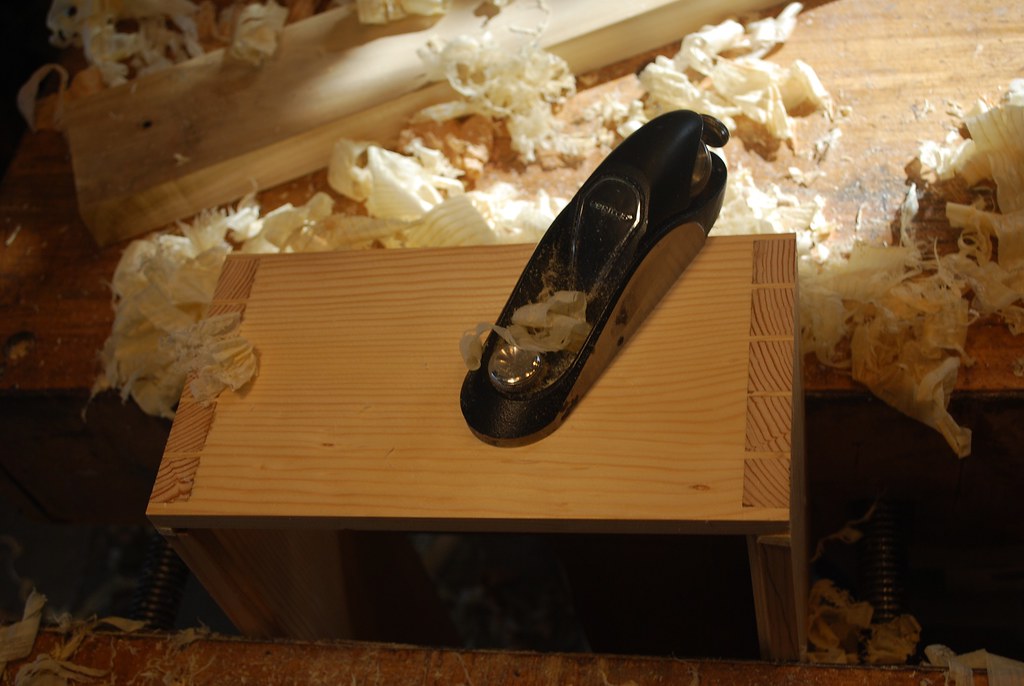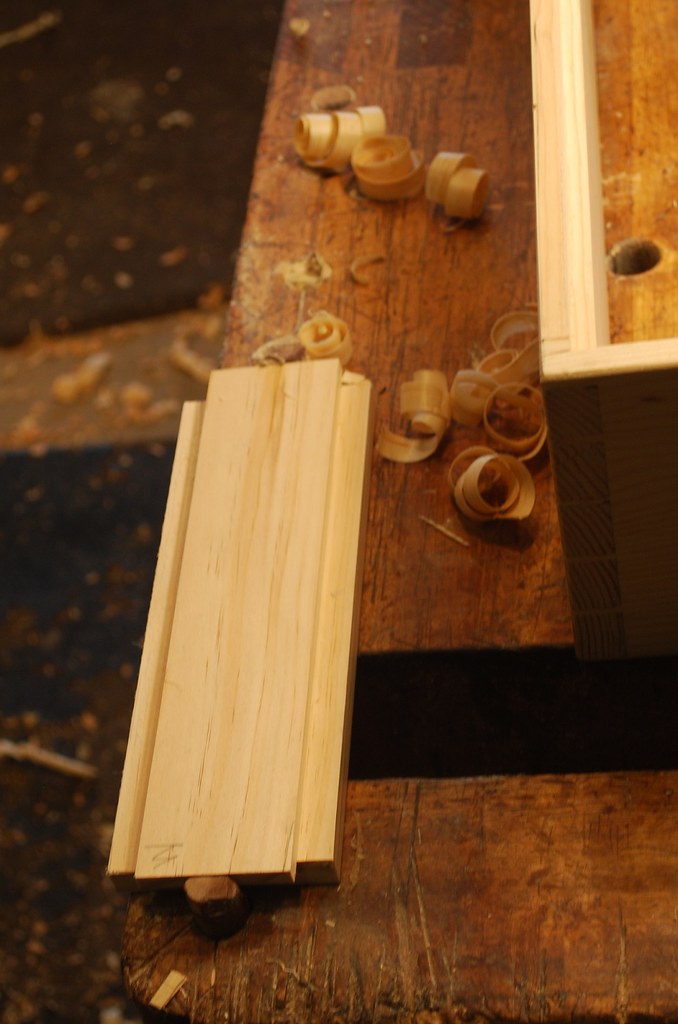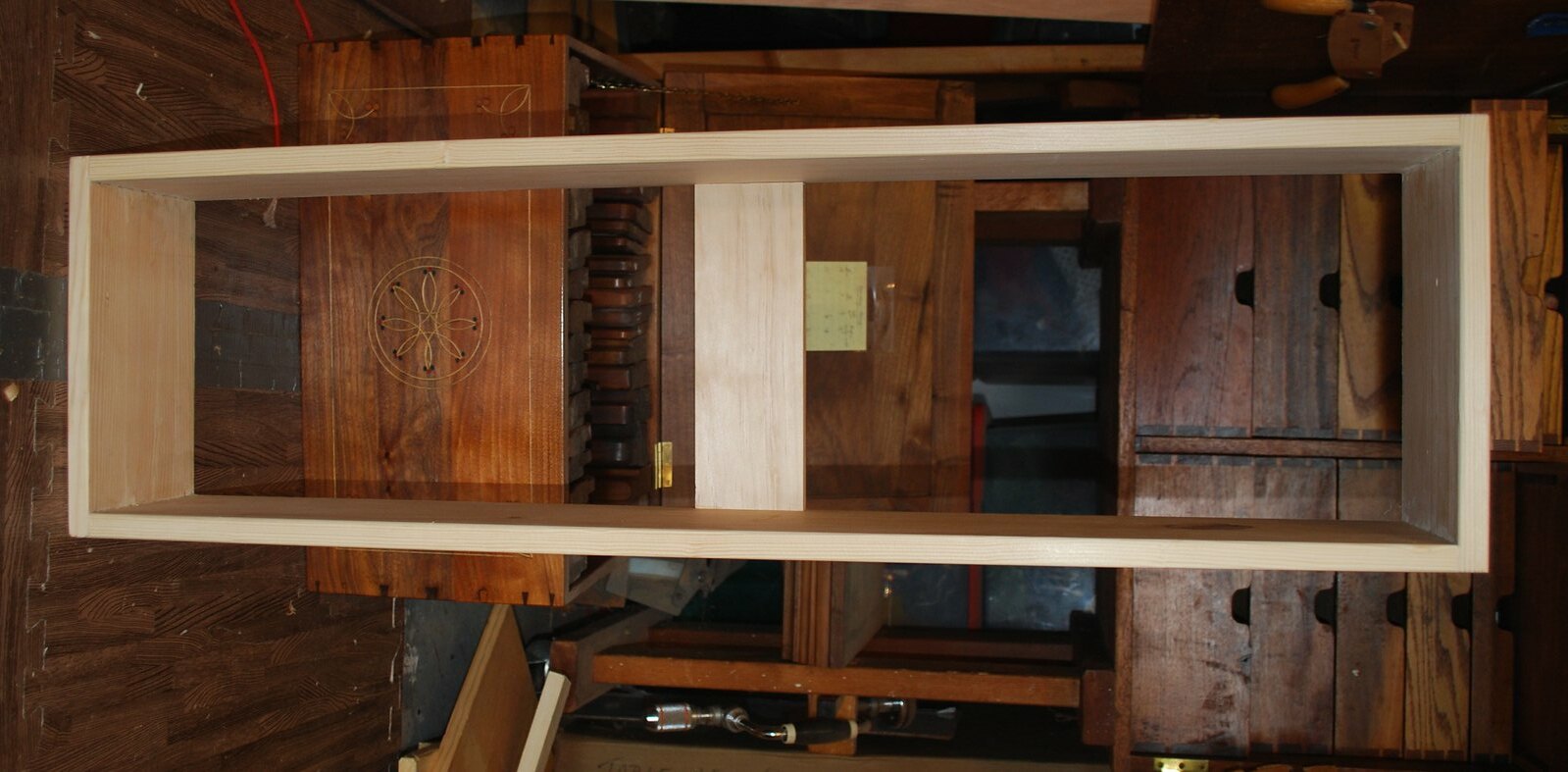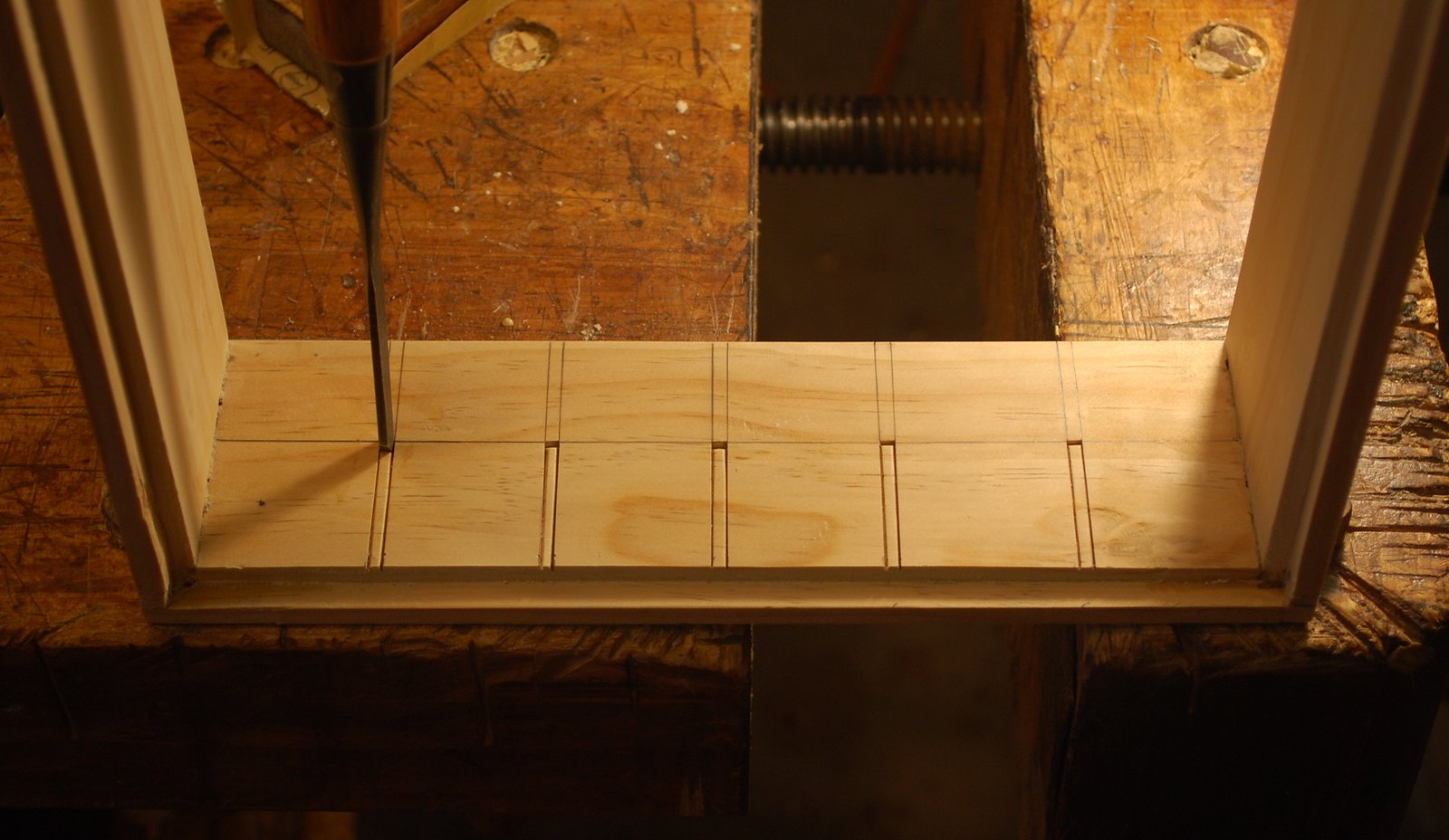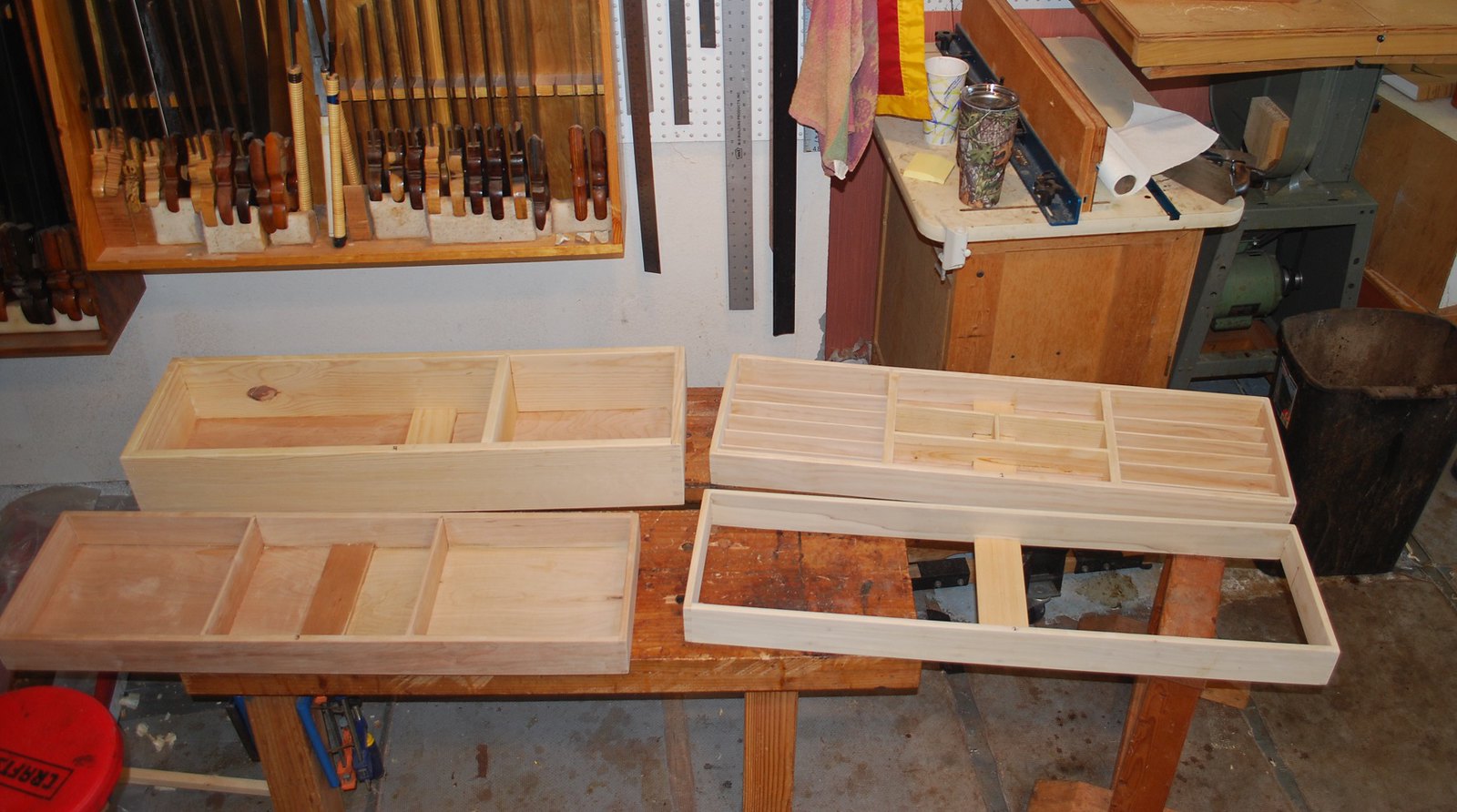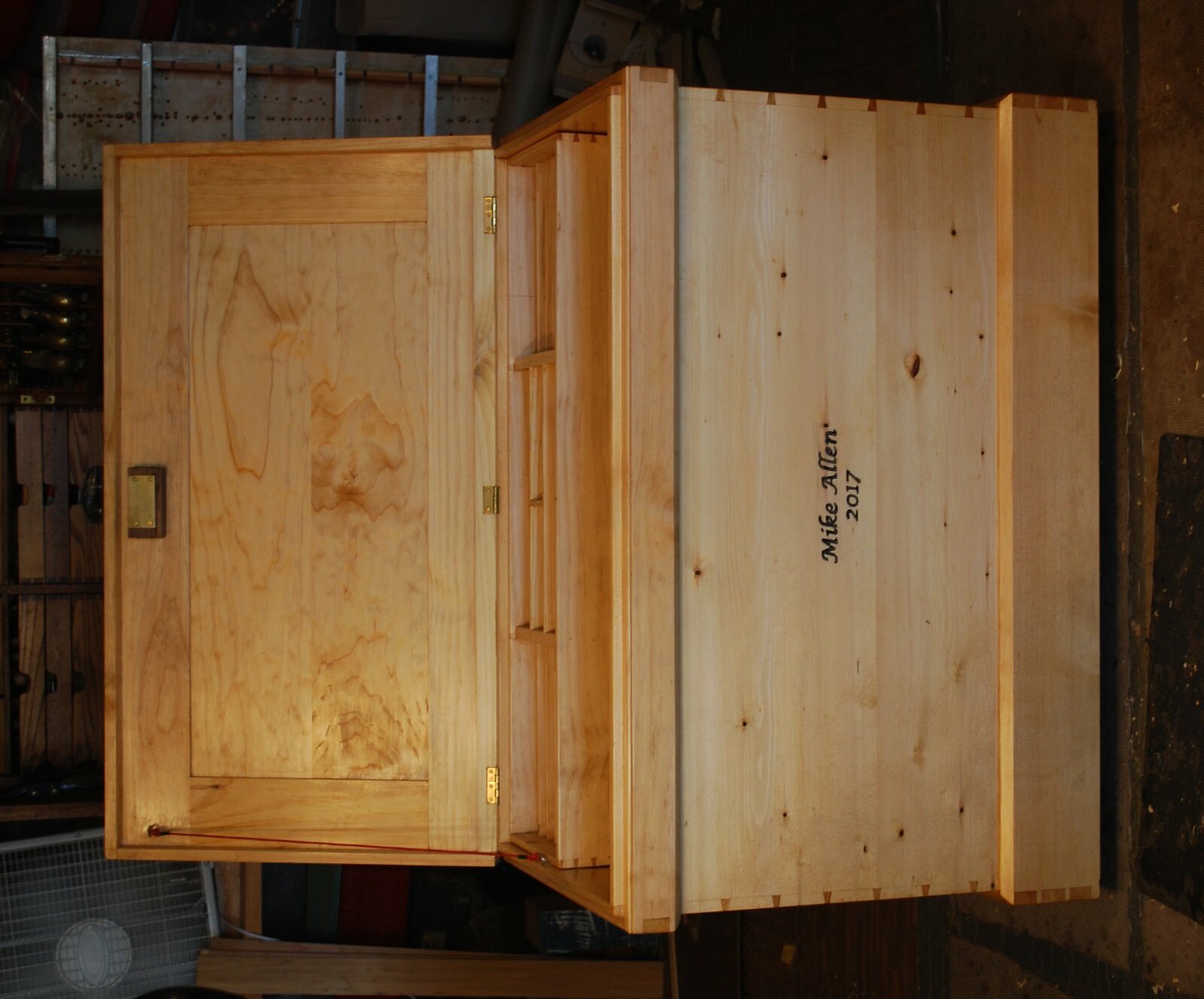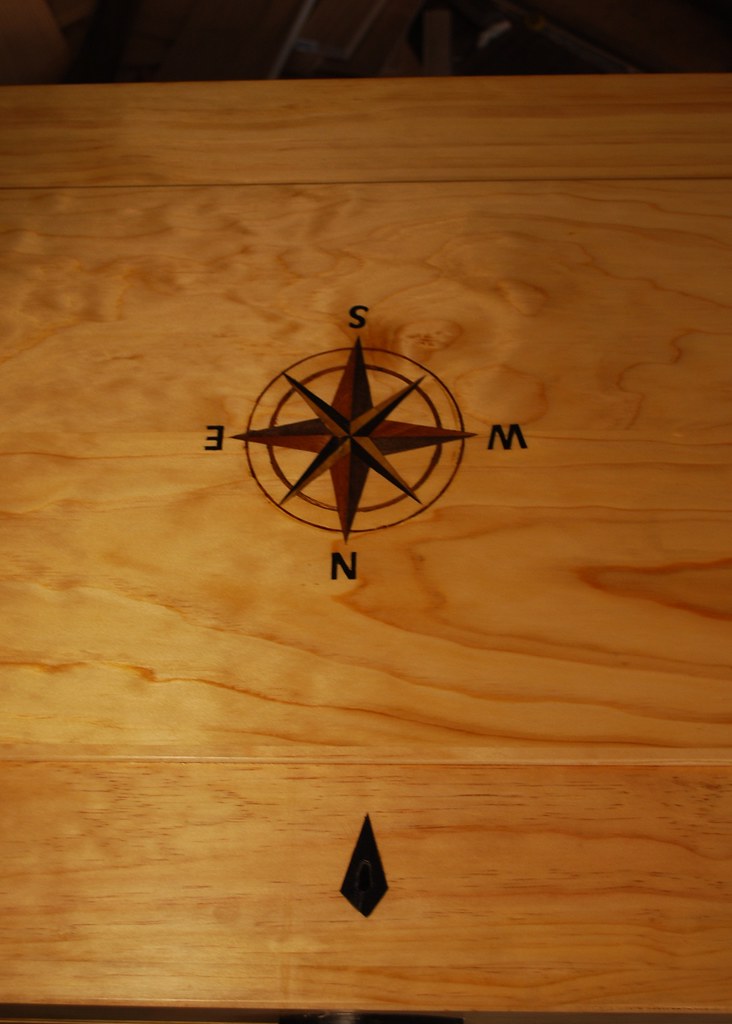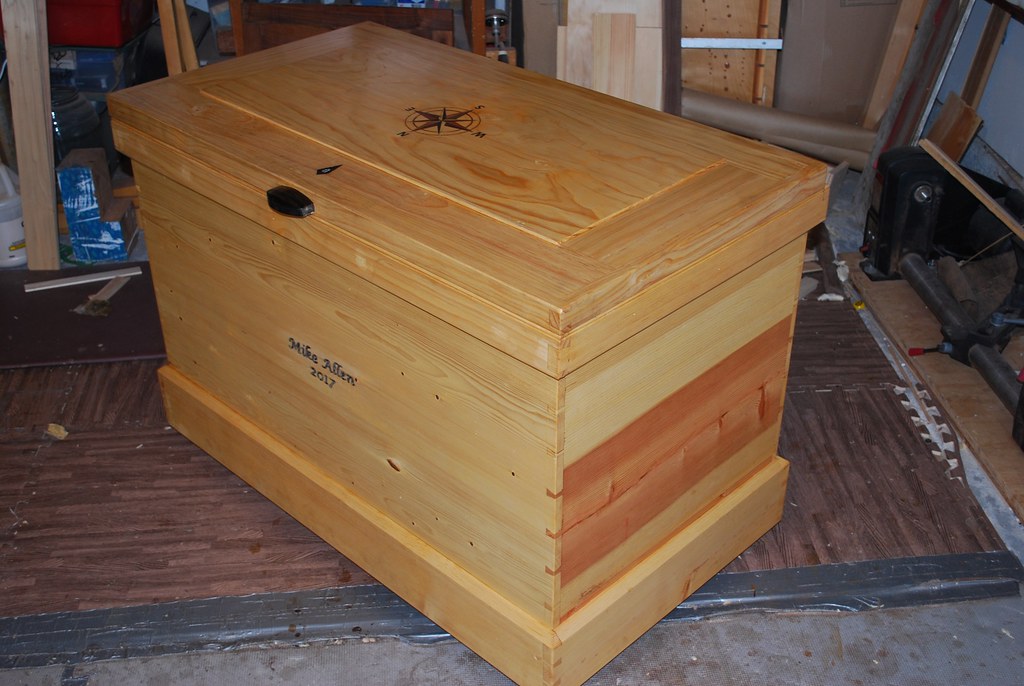I may have an opportunity to teach a workshop on sharpening/restoring vintage saws at the local community college woodworking program. I’ve done this a couple times and I usually bring a bunch of saws for people to try out. My idea is guys will hopefully be more interested in learning how to sharpen their saws after they get a chance to experience how well tuned saw performs.
Previously I’ve wrapped a bunch of saws in towels to transport from the shop to the classroom which is a poor solution. I built this test to make it a little easier. Once I got started I figured it made more sense to build a chest I could use to hold a decent kit of hand tools I could use to work outside the shop. Some build pics of an Anarchist tool chest as described in Chris Schwarz book.
I built this out of “Whitewood” from the local Borg. Mostly white pine, but a couple boards that were much harder/denser – maybe Southern yellow Pine? Problem is I sort of overdid it – started with the dimensions in Chris’s book, and as I’m want to do, “scaled them up” a little: 47” long, by 27” high, by 23” deep. I should’ve known better -now that it’s done there’s no way I’m going to be able to lift this thing into the truck!– I usually run into problems when I start “adjusting” original dimensions.
My own shop is a single car garage and I prefer to have most tools hanging on the wall in till for easy access. Consequently I don’t think this chest will replace my current shop tool storage. Odds are probably ultimately going to end up as some kind of toy chest when grandkids come into the picture (not that we’re in a hurry for that). I had planned on posting so I didn’t take any pictures of the carcass build. It’s straightforward dovetail construction with aprons on top and bottom. Here are some pictures of building the chest lid, drawers and a compass rose inlay that turned out pretty good except for one important detail!
2 by Mike Allen, on Flickr
4 by Mike Allen, on Flickr
The chest top is frame and panel construction with through M&T’s. The tennons are 4 inches long and this is when a 10 PPI panel saw filed rip came in handy for finishing the cheeks. I use an old paring chisel inherited from my Dad to establish the layout line for sawing shoulders.
6 by Mike Allen, on Flickr
7 by Mike Allen, on Flickr
8 by Mike Allen, on Flickr
10 by Mike Allen, on Flickr
11 by Mike Allen, on Flickr
12 by Mike Allen, on Flickr




 Reply With Quote
Reply With Quote